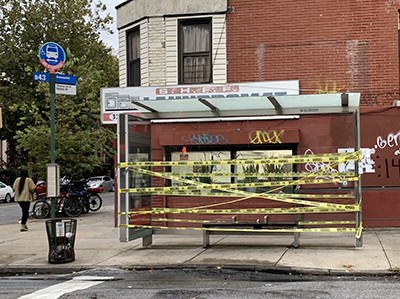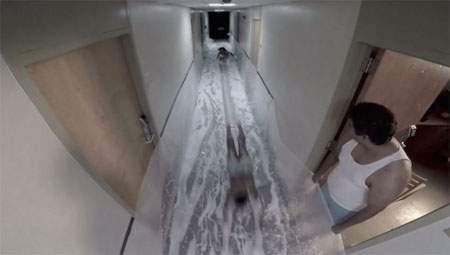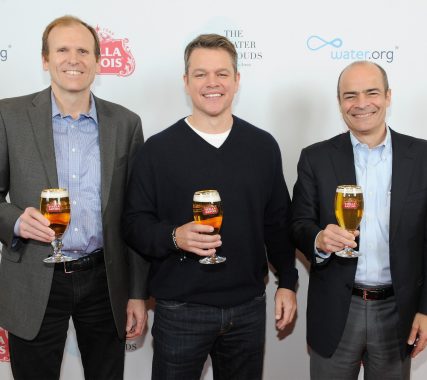Budweiser’s Out-of-Bounds Cynicism
For many, the Super Bowl is the pinnacle—of athletic competition, of advertising, of alcohol consumption. This year, main sponsor Anheuser-Busch InBev (ABI) climbed a new peak by exploiting the global pandemic for alcohol sales and lying to the public, in a true hail mary of #COVIDwashing.
The multinational beer giant ran an advertisement prior to the Super Bowl touting Budweiser’s intention to donate all of its ad space to vaccine awareness. And this was true, technically. All of the ad time that might have been used to sell Budweiser instead ran public service announcements trying to encourage viewers to get the COVID-19 vaccine when it became available.
What ABI failed to mention, however, was that the donation applied only to the Budweiser brand. The brewer giant ran ads for four other brands it owns: Bud Light, Bud Light Hard Seltzer, Michelob Ultra, and Michelob Light Organic Seltzer. Make no mistake, Budweiser is not the most popular beer in America. That title belongs to Bud Light, and ABI had no intention of losing a dollar of that dominance. Meanwhile, the Budweiser ad spot donation was covered in the New York Times, the Washington Post, Fox News, CNN, MSNBC… which is the kind of exposure money just can‘t buy.
We have seen this pattern of behavior from Big Alcohol many times in the past. Breast Cancer Action coined the term “pinkwashing” to refer companies whose products are linked to breast cancer participating in breast cancer-related charities. Alcohol Justice has been using a similar term, COVIDwashing, in homage, when Big Alcohol uses lockdowns and COVID-19 awareness campaigns to market its products and make the companies look benevolent. But much like alcohol has a clear link to breast cancer risk, it may be linked to COVID mortality as well.
Physiologically, alcohol both impairs the immune system and causes inflammation. A weakened immune system makes individuals more likely to contract COVID-19 if exposed, while the fatal reactions to the virus mostly derive from excessive lung inflammation and congestion. Socially, alcohol inspires more reckless behavior, while bars and nightclubs, as enclosed spaces where people tend to congregate very close together, threaten to become loci for spread.
This is not to say there was no way ABI could ethically support COVID-19 awareness and prevention. The company could have donated the money it spent on advertising—including the money it spent on advertising its intention to donate—to groups fighting to save lives. At the very least, it could have not lied to the public’s face, and donated all of its ad time. But given the opportunity to do the right thing, ABI instead banked on the power of #COVIDwashing, letting the public’s gratitude overshadow the corporate cynicism. It is just the latest in a long line of ethical collapse by ABI, and yet another reason to Free Our Sports and get Bud out of the Super Bowl.
WATCH the Youth For Justice and Alcohol Justice crews take down Budweiser’s two-faced charity.
LISTEN to Prevention Action Alliance’s J.P. Dorval explain how kids can learn to read between the lines of Super Bowl ads.
New York City Bans Booze Ads
 In a surprising but much-needed executive order, New York City mayor Bill de Blasio banned alcohol advertisements on city-owned property. Following on the heels of the city’s decision to remove booze ads from public transit (including buses and subway trains), the new order does the same to bus shelters, newsstands, and other street properties.
In a surprising but much-needed executive order, New York City mayor Bill de Blasio banned alcohol advertisements on city-owned property. Following on the heels of the city’s decision to remove booze ads from public transit (including buses and subway trains), the new order does the same to bus shelters, newsstands, and other street properties.
“What underpins this order is a close review of the science,” Dr. Hillary Kunins, Acting Executive Deputy Health Commissioner for the city of New York, told the New York Times. “The major studies show that exposure to alcohol advertising influences drinking, particularly in youth.”
The Times reports a high level of alcohol harm in New York City, citing 2,000 alcohol-related deaths and 110,000 emergency room visits yearly. This chronic source of death, injury, and lost productivity has a cost that may equal or exceed the revenue lost from the ad ban.
New York City is not the first major American city to make this calculation. Similar outdoor advertising bans have gone into effect in Philadelphia, San Francisco, and Los Angeles, the latter two with the involvement of Alcohol Justice and the Los Angeles Drug and Alcohol Policy Alliance.
“We commend Mayor de Blasio for taking strong action to protect residents of New York,” said Jorge Castillo, Advocacy Director at Alcohol Justice. “Outdoor ads are a blight that takes vulnerable lives. We need lawmakers in every city to stand up and take on Big Alcohol.”
READ MORE about getting rid of outdoor alcohol advertising.
READ MORE about the fight for an alcohol ad-free Los Angeles.
Boston to Wrap the "T" in Alcohol Ads
 How much is a kid worth? The Massachusetts Bay Transit Authority (MBTA), facing budget shortfalls, rescinded a five-year-old policy banning alcohol ads on Boston-area public transit this past November. The board—which operates separately from the city of Boston—voted 3-2 to allow alcohol advertising despite Mayor Martin Walsh’s strenuous objections.
How much is a kid worth? The Massachusetts Bay Transit Authority (MBTA), facing budget shortfalls, rescinded a five-year-old policy banning alcohol ads on Boston-area public transit this past November. The board—which operates separately from the city of Boston—voted 3-2 to allow alcohol advertising despite Mayor Martin Walsh’s strenuous objections.
Now some Bostonians, led by the Allston-Brighton Substance Abuse Task Force, are pushing to put them back in place. Alcohol Justice strongly supports their efforts, and have long promoted restricting alcohol ads on public property, including buses, trains, stations, and shelters. Youth are heavy users of public transit, and research confirms the common-sense assumption that greater exposure to alcohol advertising early in life makes a kid more likely to drink when they got older.
“This is short-sighted and reckless, and it sells out the kids,” said Bruce Lee Livingston, Executive Director/CEO of Alcohol Justice. “Whatever money MBTA think they’re making now, they’ll lose it paying for harm to the next generation.”
According to the Allston-Brighton Substance Abuse Task Force, underage drinking costs Massachusetts $1.2 billion yearly—more than 500 times the revenue the ads are expected to raise. And MBTA’s safeguards are ludicrous—while ads cannot be run in T stations where more than 10 percent of riders use student passes, that has nothing to do with where the riders get off. And starting in April, the MBTA intends to abandon the last vestige of subtlety, selling full-train wraps to alcohol companies.
Alcohol Justice urges its colleagues to join the Allston-Brighton Substance Abuse Task Force in putting Boston’s kids first. Do not let the MBTA board lose sight of whom it serves: those who need it most.
TAKE ACTION to get alcohol ads off the T.
On Super Bowl Sunday, AB InBev Goes for a Two-Point Bad Ad Play
 2/7/18: Water.org reassured us that Stella makes no profit from the sales of Water.org chalices. We have updated the text of the post to reflect this.
2/7/18: Water.org reassured us that Stella makes no profit from the sales of Water.org chalices. We have updated the text of the post to reflect this.
As the United States prepares for Super Bowl LII, AB InBev prepares to leverage American hardship to sell more booze. The megabrewer, which holds exclusive beer advertising rights for the event, intends to push two of its brands using charity—hiding the destructive effects of alcohol behind heavily branded interventions in domestic and international tragedy.
This is not a new tactic for Big Alcohol. Many booze manufacturers like to push “pink ribbon” campaigns that raise nominal amounts for breast cancer charities, while providing thousands of dollars of publicity for the brand—and masking the very real role alcohol use plays in breast cancer risk.
In AB InBev’s case, however, the equation is complicated by its status as a megabrewer. It is running campaigns for at least five different sub-brands during the Super Bowl, from the goofy medieval “Dilly, Dilly” ads that target youth to superhero actor Chris Pratt’s turn in the more fitness-oriented Michelob Ultra spots (that, um, also target youth). That makes the ostensible corporate altruism permeating the ads for Stella Artois and Natural Ice all the more cynical.
The Stella Artois campaign, “Buy a Lady a Drink,” raises money for actor Matt Damon’s water.org, which provides safe drinking water in the developing world. This is a laudable goal, and were Stella to simply pay to advertise for water.org and urge Super Bowl viewers to donate, it would be an act of true philanthropy.
However, Stella does not solicit donations, nor does it direct kind-hearted individuals to a donation page. Instead it urges viewers to buy branded “chalices” (possibly some synergy with the not-at-all philanthropic Bud Light monarchy), with a cut from each sale going to the charity. Not only does this mean that the self-evident way to get involved is to submit to Stella’s marketing, the overall cost of creating and advertising the chalices--never mind buying the Super Bowl ad time--likely overshadows the revenue raised by their sales. Simply delivering the money upfront to water.org without the junk branded glassware or earnest monologues would be more efficient and more effective.
It would also prevent AB InBev from generating a smokescreen for their global marketing strategy: increase alcohol consumption in lower- and lower-middle income countries. Alcohol-related harm and death is a real and growing problem in the developing world, and Matt Damon is complicit—delivering the residents of poverty impacted countries from the dangers of untreated water only to turn them over to global alcohol giants.
 "The nature of Big Alcohol is to sell more alcohol to more people," said Carson Benowitz-Fredericks, Research Manager for Alcohol Justice. "So when you think of them making a profit--even a tiny one--off these beer glasses, and then plowing that right back into higher rates of drinking, it starts to seem a bit like blankets full of smallpox."
"The nature of Big Alcohol is to sell more alcohol to more people," said Carson Benowitz-Fredericks, Research Manager for Alcohol Justice. "So when you think of them making a profit--even a tiny one--off these beer glasses, and then plowing that right back into higher rates of drinking, it starts to seem a bit like blankets full of smallpox."
For evidence of what harms the alcohol companies can do when unchecked and able to deliver mass quantities of product at low price points, look no further than… college. Binge drinking is epidemic; 20% of college students may have an alcohol use disorder, and 2/3s of those who drank in the past month binge drank. Most importantly, the majority of college students are under the legal drinking age of 21. AB InBev’s Natural Ice and Natural Light have a large following on college campuses for being cheap, relatively high ABV, and readily available in large cases. AB InBev is well aware of this; it has even launched a side line of flavored malt beverages named Natty Rush, appropriating the collegiate nickname.
For this NFL trophy game, Natural Light is offering to cover some students’ outstanding loans, with a catch: anyone “applying” for this boon has to make a video featuring the product. The offer itself is presented through a vaguely nostalgic ad featuring an in-dorm slip-n-slide—dorms, of course, being where students tend to live in their first few years in school. Not content for Sunday's young-eye bonanza, AB InBev is shamelessly cementing its bargain-basement product as the go-to for underage drinking.
“Big Alcohol gets away with voluntary regulations and claims they are always doing the right thing,” stated Michael Scippa, Director of Public Affairs for Alcohol Justice. “But then they go on the world’s largest televised stage and tell people the best times of their lives came from underage drinking. When they say they want to do good, it’s impossible to take them seriously.”
Given the access to young eyes, the ongoing issues with booze and the NFL, and the international efforts to push back against Big Alcohol’s stranglehold on athletics, it’s long past time AB InBev got out of the Super Bowl. If it wanted to make a positive change, it could donate out of the goodness of its heart—not the effectiveness of its marketing.
READ MORE about getting AB InBev out of our sports.
WATCH the youth-written, youth-directed Free Our Sports videos.
More Articles ...
Help us hold Big Alcohol accountable for the harm its products cause.
| GET ACTION ALERTS AND eNEWS |
STAY CONNECTED    |
CONTACT US 24 Belvedere St. San Rafael, CA 94901 415-456-5692 |
SUPPORT US Terms of Service & Privacy Policy |


